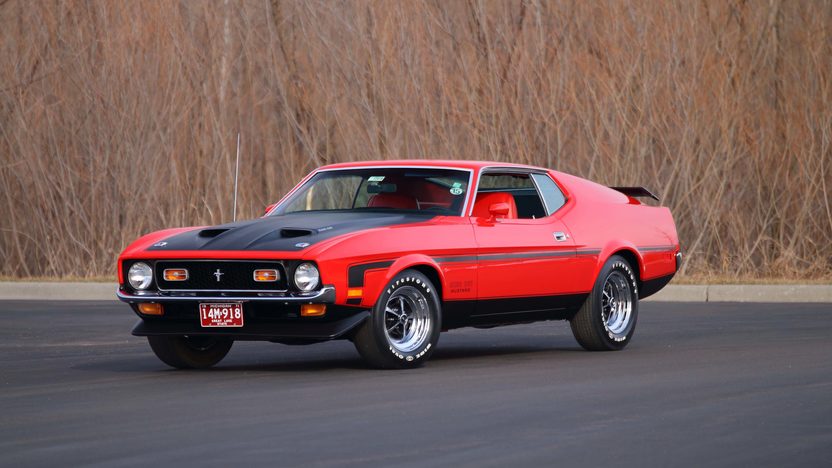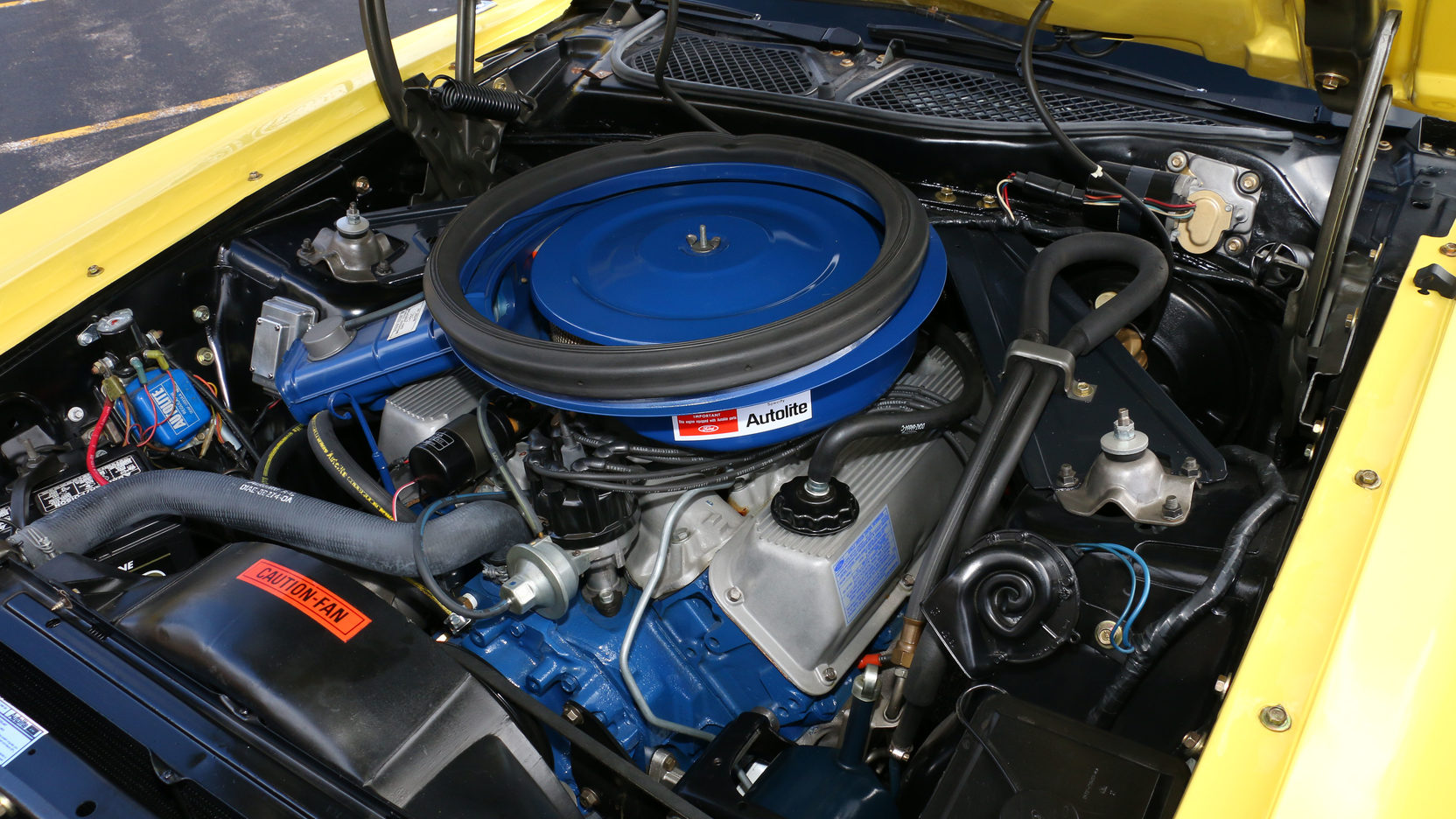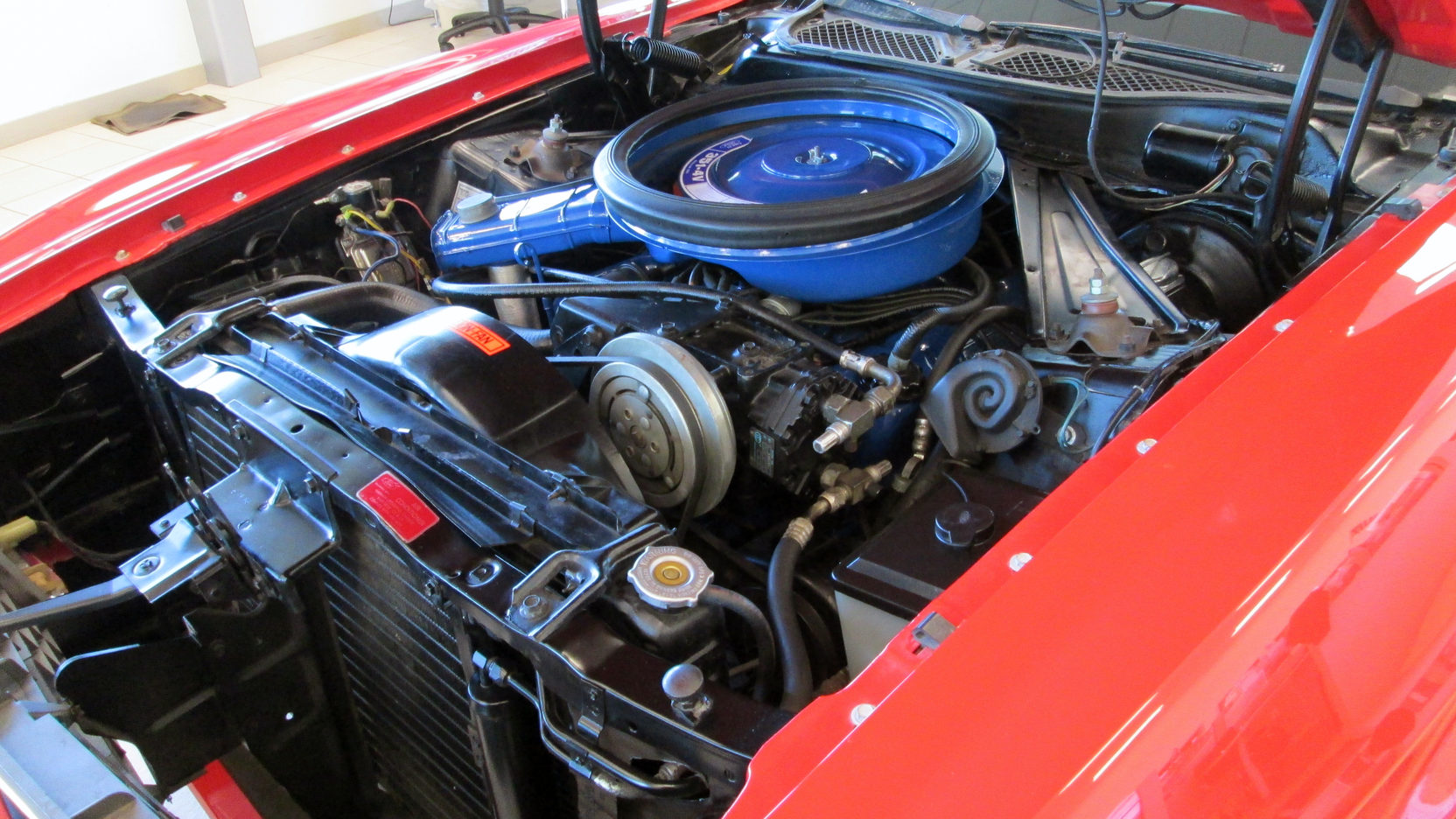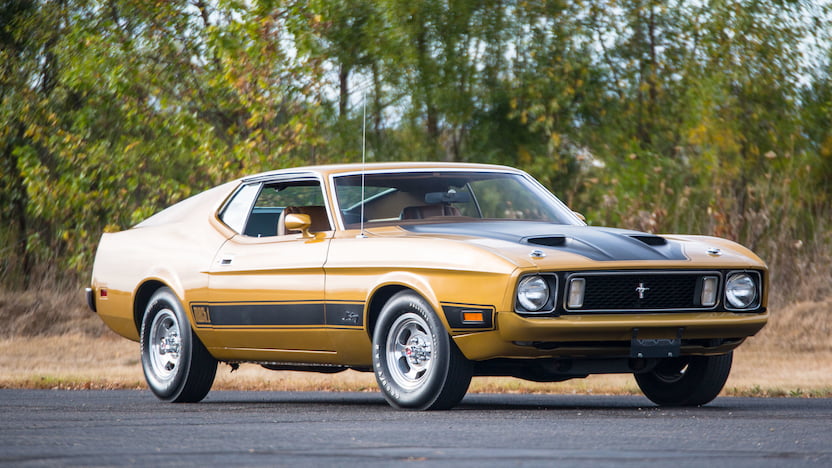Sorting out the Mustang’s 351 Cleveland engines
Ford offered a wide array of V-8 engines in the first-generation Mustang. Looking back, it’s a legacy of performance and rarity, sprinkled with some confusion and a total lack of interchangeability. The 351 Cleveland lasted longer than some, giving the 1970–73 Mustang a robust gallop while becoming a semi-legend among Ford buffs. It also became a formidable force in Pro Stock drag racing.
The Mustang first offered a 351-cubic-inch small-block V-8 in 1969. Known as the 351 Windsor—for Ford’s Windsor, Ontario, engine plant—it was more than a longer-stroke version of the 302, using a different block and firing order. Offered in two- and four-barrel carburetor versions, the Windsor was a solid performer. However, it was a placeholder in the Mustang while Ford meanwhile finished prepping a more performance-oriented engine family, known by the internal code “335.” This would become the 351 Cleveland, named for where it was produced: Ford Engine Plant Number 2 in Cleveland.
Aside from shared bore and stroke dimensions as well as displacement, the 351C was completely different from the 351W. Its block was lower and wider, and the engine was a bit heavier overall. The 351C replaced the 351W in the Mustang (and Mercury Cougar) for 1970, although some ’70 models received the Windsor two-barrel, according to Kevin Marti, who uses licensed Ford build data to create the Marti Reports.
The big story for the Cleveland was breathing. The cylinder heads were essentially plucked from the Boss 302, with minor changes. Ports and valves were larger than on the Windsor, and the valves were canted—that is, tilted in two planes, similar to the Chevy 396/427/454 big-block V-8. The 351C two-barrel used 2.04-inch intake and 1.65-inch exhaust valves; the four-barrel version had 2.19/1.71-inch valves (except the ’73, which used the smaller valves). For comparison, high-performance Chevy small block V-8s, including the 1970–72 Camaro Z/28’s LT-1, used 2.02/1.60-inch valves.
Ford kept the changes coming year to year, offering five different versions of the 351C in the 1970–73 Mustang.

1970: Unfulfilled potential
The 1970 Mustang offered two versions of the 351C, the H-code with two-barrel carburetor, and the M-code four-barrel, which also had higher compression cylinder heads (10.7:1 vs. 9.5:1), using closed—or quench-type—combustion chambers vs. open-type for the two-barrel. The two-barrel received the same 250-horsepower rating as the 1969 351W two-barrel, which also was tagged H-code.
Using a mild hydraulic cam and a relatively small 600-cubic-feet-per-minute (cfm) carburetor, the M-code was rated at 300 hp. It went into some 23,500 1970 Mustangs. In the Mach 1, it was a $48 upgrade over the H-code that came standard.

1971: The Cleveland gets a Boss
The 351C H-code and M-code engines carried over to the larger, redesigned 1971 Mustang, although the M-code’s horsepower was now listed as 285, with slightly lower compression. Two more versions joined the line.
The one-year-only Boss 351 was the ultimate factory-built Cleveland, tagged R-code and also identified as “351 H.O.” The new Boss capitalized on the Cleveland’s inherent high-rpm breathing capability with 11.7:1 compression and performance goodies that included four-bolt main bearing caps, forged pistons, shot-peened connecting rods, high-lift mechanical-lifter cam, adjustable rocker arms, and aluminum intake manifold with 750-cfm spread-bore four-barrel carburetor, ram air induction, and dual-point ignition. Rated at 330 hp, the Boss 351 could run the quarter-mile in the low-14-second range at about 100 mph, on par with the Mustang’s optional big-block 429 Cobra Jet. Ford made 1,806 Boss 351s.


In spring 1971, Ford replaced the M-code with the hotter Q-code, calling it the 351 Cobra Jet. Switching to open-chamber cylinder heads lowered compression to 9:1 and also reduced emissions. The Q used a higher-lift hydraulic cam, along with the Boss 351’s four-bolt main bearing caps, 750-cfm carburetor and, on cars with the four-speed manual, a dual-point distributor. Advertised horsepower was 280. Just 144 Mustangs got the late-arriving Q-code for 1971, according to “Mustang by the Numbers” by Marti.
Aside from the Boss 351 engine, which was exclusive to that model, all other variants of the 351C four-barrel were available in any Mustang, with Ram Air as an option.
1972: The Cleveland Trio
The switch to net horsepower and torque ratings in 1972 reflected more realistic as-installed output. The H-code 351C two-barrel had 177 hp, while the Q, with slightly retarded camshaft timing vs. the 1971 version, packed a stout 266-hp kick. (The 1972 Camaro Z/28 had 255 net hp.) The Q went into 10,249 Mustangs for ’72.


Surprisingly, Ford also offered an R-code 351 H.O. as a second performance option. It was based on the Boss 351 engine but with the lower-compression open-chamber heads and a somewhat milder cam (but still mechanical); it was rated at 275 net hp. The performance package included the four-speed transmission, 3.91:1 rear axle and suspension upgrades and cost a staggering $812. Car and Driver clocked a 351 H.O. fastback 0–60 in 6.6 seconds and the quarter-mile in 15.1 seconds at 96 mph, still respectable for a 1972 pony car. The 1972 H.O. was rare, going into just 398 Mustangs, including 13 convertibles.
1973: Riding into the muscle car sunset
The 1973 Mustang went back to two 351C choices, the H- and Q-code, the latter still rated at 266 hp despite a switch to the H-code’s smaller valves. (The four-barrel was rated at 246 hp in Ford’s mid-size cars.) The Q went into 12,557 Mustangs for 1973. Ram Air was available only with the two-barrel, a concession to drive-by noise regulations.
In just few short years, the 351 Cleveland surely made its mark.




I don’t think the Q-code replaced the M-code in 1971. They were available concurrently.
I had a 1070 Mustang Fastback, with a 351(I was told a cobra Jet) and beat most Clevlands hands down. I have tried to google more information, but think this is a good place to ask for asny info.
Thank you.